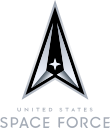
Constellation program
Cancelled 2005–2010 NASA human spaceflight program / From Wikipedia, the free encyclopedia
Dear Wikiwand AI, let's keep it short by simply answering these key questions:
Can you list the top facts and stats about Constellation program?
Summarize this article for a 10 years old
The Constellation program (abbreviated CxP) was a crewed spaceflight program developed by NASA, the space agency of the United States, from 2005 to 2009. The major goals of the program were "completion of the International Space Station" and a "return to the Moon no later than 2020" with a crewed flight to the planet Mars as the ultimate goal. The program's logo reflected the three stages of the program: the Earth (ISS), the Moon, and finally Mars—while the Mars goal also found expression in the name given to the program's booster rockets: Ares (the Greek equivalent of the Roman god Mars).[3][4] The technological aims of the program included the regaining of significant astronaut experience beyond low Earth orbit and the development of technologies necessary to enable sustained human presence on other planetary bodies.[5]
 | |
| Program overview | |
|---|---|
| Country | United States |
| Organization | NASA |
| Purpose |
|
| Status | Cancelled |
| Program history | |
| Cost | $230 billion (2004) |
| Duration | 2004[1]–2010[2] |
| First flight |
|
| Last flight |
|
| Successes | 2 |
| Launch site(s) | |
| Vehicle information | |
| Crewed vehicle(s) | |
| Launch vehicle(s) | |
| Part of a series on the |
| United States Space Program |
|---|
  |
|
Human spaceflight programs |
|
National security space |
Constellation began in response to the goals laid out in the Vision for Space Exploration under NASA Administrator Sean O'Keefe and President George W. Bush.[6][7] O'Keefe's successor, Michael D. Griffin, ordered a complete review, termed the Exploration Systems Architecture Study, which reshaped how NASA would pursue the goals laid out in the Vision for Space Exploration, and its findings were formalized by the NASA Authorization Act of 2005. The Act directed NASA to "develop a sustained human presence on the Moon, including a robust precursor program to promote exploration, science, commerce and US preeminence in space, and as a stepping stone to future exploration of Mars and other destinations."[3] Work began on this revised Constellation Program, to send astronauts first to the International Space Station, then to the Moon, and then to Mars and beyond.[4]
Subsequent to the findings of the Augustine Committee in 2009 that the Constellation Program could not be executed without substantial increases in funding, on February 1, 2010, President Barack Obama proposed to cancel the program, effective with the passage of the U.S. 2011 fiscal year budget.[8][9][10][11] He then revised administration statements in a major space policy speech at Kennedy Space Center on April 15, 2010.[12] On October 11, the signing of the NASA Authorization Act of 2010 shelved the program,[13] with Constellation contracts remaining in place until Congress would act to overturn the previous mandate.[14][15] In 2011, NASA adopted the design of its new Space Launch System.[16]